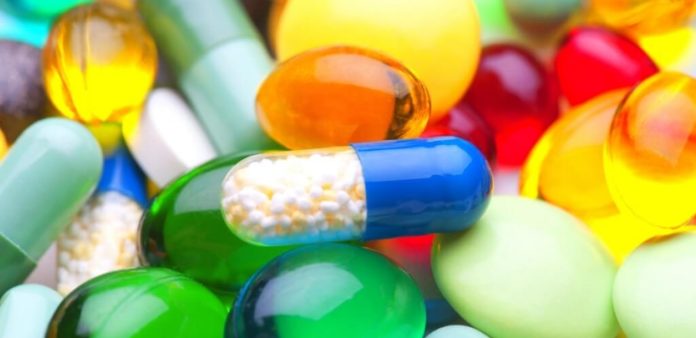India’s top pharmaceutical companies such as Dr Reddy’s, Aurobindo, Ranbaxy, Divis, Hetero and Mylan are polluting the environment like never before. Indiscriminate disposal of drug-waste is triggering antibiotic-resistant bacteria in the environment. This simply means discharges from pharmaceutical factories are leading to unprecedented occurrences of bacteria, which do not succumb to antibiotics, and make diseases increasingly hard to treat. If a team of Swedish scientists is to be believed, the danger is far greater as it is being ignored with typical government denial and callousness.
Patancheru-Bollaram, India’s ‘bulk drug capital’ near Hyderabad with a population of one lakh, supplies antibiotics to much of the world. The region is the test case. With more than 250 pharmaceutical units, Patancheru-Bollaram is one of the world’s largest production hubs for antibiotics, and constitutes a major node in the global pharmaceutical chain.
However, the drugs meant to cure people are causing immense harm where they are produced, making Patancheru-Bollaram a dangerous place to live in.
The group of Swedish scientists who authored a series of reports on Patancheru-Bollaram reveal environmental shockers: Patancheru’s rivers, lakes, tanks, streams, groundwater and wells are contaminated by drug-resistant bacteria, the highest ever detected in the world. While main water bodies such as Nakkavagu river, Isakavagu stream, Kazipally lake, Asanikunta tank and wells are polluted with the bacteria, soil samples from Baithole, Pocharam, Ganapahigudem, Begumpetthanda, Peddakanjarla, Sultanpur, Gandigudem, Khazipally, Dundigal, Kistapur, Ravulkoll, Akbajapet, Rai Bollaramthanda, Masidpally and Shamirpet villages are also contaminated.
“Our studies have shown that many drugs, including a broad spectrum antibiotics, are present in water bodies here at very high concentrations. These bacteria may spread to humans and create a widespread risk for diseases difficult to treat,” says Joakim Larsson, leader of the team and Director, Centre for Antibiotic Resistance Research at University of Gothenburg, Sweden. The proliferation of the resistance-bacteria surprisingly begins with a treatment plant called Patancheru Enviro Tech Ltd (PETL), supposed to clean up pharma-waste, but in reality it has become a reservoir for spreading the menace. “The external environment, particularly the treatment plant where environmental bacteria meet human pathogens (bacteria known to cause infections) in large numbers, has become a potential breeding ground,” says Larrson. “We have shown that bacteria from the treatment plant are resistant to 30 out of 39 tested antibiotics, which is very high by any standard.”
With overcapacity and inappropriate processing of effluent, untreated or partially treated waste from the treatment plant travels to rivers, lakes and ground water. To add to this, top manufacturing units that include who’s who of Indian pharma industry such as Dr Reddy’s, Aurobindo, Ranbaxy, Divis, Hetero, Mylan and SP Pharmaceuticals are resorting to illegal dumping of untreated waste in the area. Local activist Anil Dayakar elaborates: “Big pharma companies are permitted to release a certain amount of effluent to the treatment plant. However, as the biggies produce pharma-waste more than permissible level, they hire local tankers who dispose of lethal waste in open space in the locality. The tanker-business is quite brisk. No wonder, there has been a mushrooming of small, unorganised and illegal tanker units.”
An analysis by Centre for Science and Environment (CSE) in November 2015 found 15 drug manufacturers within the cluster had “egregiously flouted” environmental regulations. “Most are manufacturing pharmaceutical ingredients, for which they did not have permission, using more water than the permitted limit and dumping more effluents and hazardous waste than allowed”, observes CSE. Many of these companies are repeat offenders.
The result on the ground is horrific. The treatment plant and surface, ground and drinking water bodies in Patancheru are inundated with powerful antibiotics such as fluoroquinolones (ciprofloxacin, levofloxacin and norflosacin), quinolones, sulphonamides, norfloxacin, enoxacin, etc. The team found that the amount of ciprofloxacin entering water bodies from the plant could amount to up to 45 kg a day, the equivalent of 45,000 daily doses. Asanikunta tank and Kajapally lake harbour considerably higher proportions of ciprofloxacin and sulfameth oxazone resistant bacteria than other Indian and Swedish lakes included for comparison (52% vs 2%; 60% vs 7% respectively).
Water bodies which receive treated waste are enriched with resistance genes, a stretch of DNA that makes bacteria carrying genes resistant to treatment by antibiotics. In a water body, resistance genes were estimated to be 7,000 times more abundant than in a Swedish lake included for comparison, where only eight resistance genes were found. “Our studies show that not only there is an increase in resistance genes in polluted sites, but there is also an increase in genetic elements that help bacteria exchange genes”, says Larssson. Kazipally lake, polluted by direct dumping of waste from pharmaceutical production, seems to be the site with the most number of resistance genes and bacteria. It also has a higher antibiotic concentration compared to other water bodies.
Does it mean people in Patancheru are developing resistance to antibiotics, leading to dreaded diseases hard to treat?
Larsson replies through an e-mail: “This is about hazard identification, risk assessment and risk management. There are clear risks involved in the pollution. This speaks in favour for actions to limit pollution and reduce risks.”
The Swedish team elaborates: “When antibiotics are present in the environment in sufficiently high concentrations, bacteria can adapt and become tolerant or resistant to antibiotics in different ways. So, the abundance of antibiotic-resistant bacteria and resistance genes increase in the environment. If such bacteria reach humans and happen to be of a species that cause infections, such infections are very difficult to treat. This could, at the end of the day, lead to treatment failure sometime down the line.”
No doubt, danger is looming large. That is why the Swedish reports have grabbed global attention. Patancheru supplies antibiotics to a major part of the world, hence, it is not just a local problem, especially when antibiotic resistance kills 700,000 people every year across the world. “Development of resistance in bacteria in India is very much a global problem. It may hit anyone of us, regardless of where we live. Our body exchanges bacteria with the environment. These bacteria can travel with us across countries. In one of our studies, we showed that Swedish people travelling to India carried bacteria containing resistance genes when they came back to Sweden,” says Larsson.
The Swedish government has already proposed changes to the framework of good manufacturing practice. Based on one of the studies, the British government also proposed a worldwide discharge limit for antibiotic from manufacturing sites. It says that such emissions as those we have shown in Patancheru needs to be reduced to protect the usefulness of antibiotics in the future. Norway, which imports the maximum number of antibiotics from Patancheru, has also promised to take a tough stance. Karita Bekkemellem, CEO of Association of the Pharmaceutical Industry in Norway, says, “We have got reports of production in India. I was not aware that it was this serious and with these consequences for resistance. We will act. It is a global concern, not only India specific.”
At a time when the world is tightening the noose around India’s $ 20 billion pharma industry, the roles of governments (states and Central alike) and of Telangana State Pollution Control Board (TSPCB), is shocking. When contacted, TSPCB was blissfully ignorant of the problem. Its spokesperson Raveendran is not even aware of the Swedish report, barring the first one that was submitted in 2007. Even that report was not taken note of. Despite several reminders, the authority has refused to give an elaborate reply, instead it assured us: All is well.
Article by Bikash C Paul
Feature image courtesy medicalfuturist

























